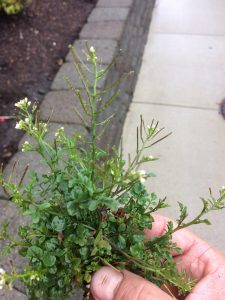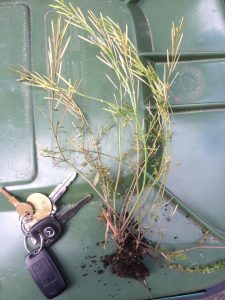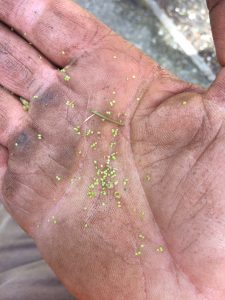There are many native plants that are considered weeds in horticulture and one such plant is little Western bittercress (Cardamine oligosperma). It’s actually a nice little plant. But read on because you will soon find out why we fight this weed in our landscapes. I see it on all of our sites. The best procedure is to fight it before it flowers and produces seeds.
Details
Cardamine oligosperma is a fast-growing native to Western North America. It’s an annual or biennial herb which grows from a taproot. It’s usually 20cm tall and grows in a branched form.
Flowers have four white petals 2-4 mm long.
Snapweed
Cardamine oligosperma fruit is a narrow exploding silique 1.5 mm wide with 15-22 seeds. Seeds are oblong-ovate and they are the plant’s mode of propagation. This is great information for landscapers.
Another common name for this plant is snapweed. This is because when the siliques mature they explode. You can touch them and have some fun with exploding seeds. Just don’t do it on my sites. Remember what we do with weeds: we get to them before they flower or worse, produce seeds.
I had some fun today. I ran my fingers over a mature Cardamine oligosperma and tried to catch as many exploding seeds as I could. The photo below shows the result. Now imagine if you let a patch of snapweed mature and explode seeds all over your landscape. You are looking at a fight next season. So get to them before they mature.
In conclusion, get to know little Western bittercress or snapweed (Cardamine oligosperma) and fight it in your landscapes. It might be a cute native herb but we can’t let it produce seeds on our sites.







